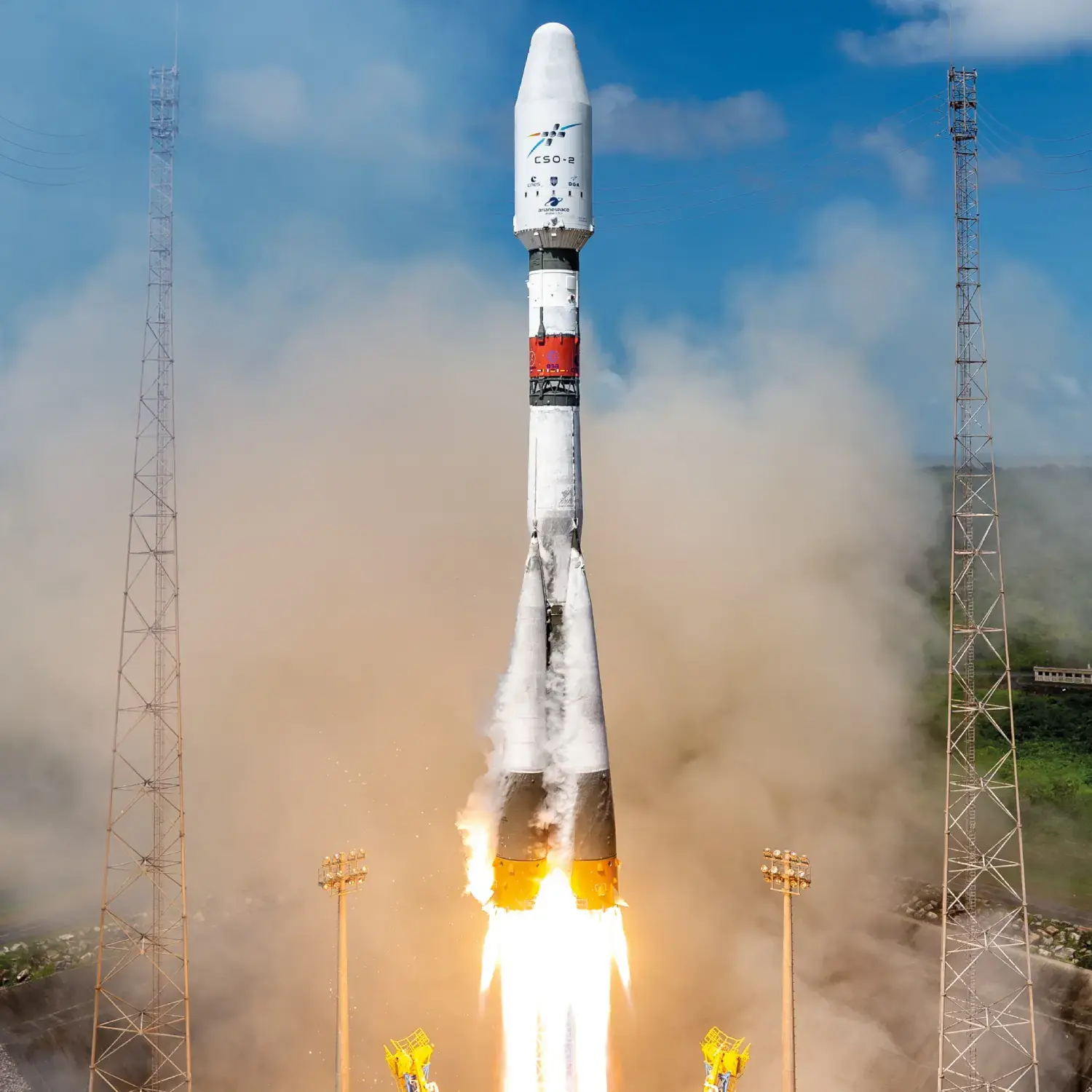CSG-1, CHEOPS & Others
Launch Success
Liftoff Time (GMT)
08:54:20
Wednesday December 18, 2019
Watch Replay
Official Livestream
Watch on arianespace.com
Mission Details
Read Article
Launch Notes
Flight VS23.
CHEOPS
CHEOPS (CHaracterising ExOPlanets Satellite) is a planned European space telescope for the study of the formation of extrasolar planets. The main goal of CHEOPS will be to accurately measure the radii of the exoplanets for which ground-based spectroscopic surveys have already provided mass estimates. Knowing both the mass and the size of the exoplanets will allow scientists to determine the planets' density and thus their approximate composition, such as whether they are gaseous or rocky. CHEOPS will be the most efficient instrument to search for shallow transits and to determine accurate radii for known exoplanets in the super-Earth to Neptune mass range (1-6 Earth radius).
Sun-Synchronous Orbit
1 Payload
273 kilograms
CSG-1
The COSMO-SkyMed second generation (Constellation of Small Satellites for Mediterranean basin observation) or CSG is an Earth observation program of the Italian Space Agency (ASI) to replace the first generation COSMO-SkyMed system. For the second generation, the COSMO-SkyMed constellation has been reduced from four to two spacecraft. The satellites are improved versions of the original design. They utilize an improved version of the Prima Bus. The CSG-SAR (COSMO-SkyMed Second Generation Synthetic Aperture Radar) is also an improved version of the first-generation X-band SAR system. The contract was signed in September 2015. The satellites will operate in the same circular sun-synchronous dawn-dusk orbit as the first-generation satellites with a nominal altitude of 619 km and an inclination of 97.86º.
Sun-Synchronous Orbit
1 Payload
2,205 kilograms
ANGELS
ANGELS, an acronym for Argos Neo, is a nano-satellite configured on CNES and manufactured with a NEXEYA electronic processor that must carry an Argos payload. ANGELS uses a platform in CubeSat 12U format (about 20 kg). The Argos Neo payload developed by Thales Alenia Space and Syrlinks is a considerably lighter version of the equipment launched on previous satellites. The mass is reduced from 18 kg to 2.5 kg and it consumes 15 watts instead of 40 watts. The generic platform derived from this prototype must cover a range of satellites ranging from CubeSat 6U to 27U (12 to 45 kg), guaranteeing a lifespan of 4 to 5 years. The platform could find opportunities firstly recurrently with the Argos system but also in the field of defense and export.
Sun-Synchronous Orbit
1 Payload
27 kilograms
EyeSat
Eye-Sat (also spelled EyeSat) is a 3U CubeSat astronomy mission studying zodiacal light and the milky way developed by students from engineering schools working at the French space agency (CNES) in Toulouse, together with students from the University Technological Institute (IUT) in Cachan, France.
Sun-Synchronous Orbit
1 Payload
7 kilograms
OPS-SAT
OPS-SAT is a CubeSat currently being built by the European Space Agency (ESA) and it is intended to demonstrate the improvements in mission control capabilities that will arise when satellites can fly more powerful onboard computers. It consists of a satellite that contains an experimental computer that is ten times more powerful than any current ESA spacecraft. The OPS-SAT mission has the very clear objective to break the cycle of “has never flown, will never fly” in the area of satellite control. It is going to be the first CubeSat operated directly by ESA. OPS-SAT shall provide an in-orbit test-bed environment for the deployment of different experiments to test new protocols, new algorithms, and new techniques. The satellite is being designed to be robust and no Single point of failure should exist, therefore it shall be always possible to recover the spacecraft if something goes wrong with one of the software experiments. The robustness of the basic satellite itself will allow ESA flight control teams to upload and try out new, innovative control software submitted by experimenters.
Sun-Synchronous Orbit
1 Payload
7 kilograms
Rocket


Manufacturer
RKK EnergiyaPrice
$30.00 million
Rocket
Height: 46.94m
Payload to Orbit
LEO: 8,500 kg
GTO: 3,000 kg
Liftoff Thrust
4,317 Kilonewtons
Fairing
Diameter: 4.11m
Height: 11.43m
Stages
4
Strap-ons
4
Launch Site
Stats
Soyuz 2.1a
43rd
Mission
6th
Mission of 2019
RKK Energiya
275th
Mission
9th
Mission of 2019
2019
97th
Orbital launch attempt